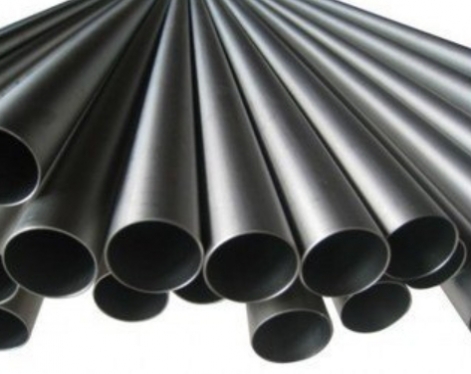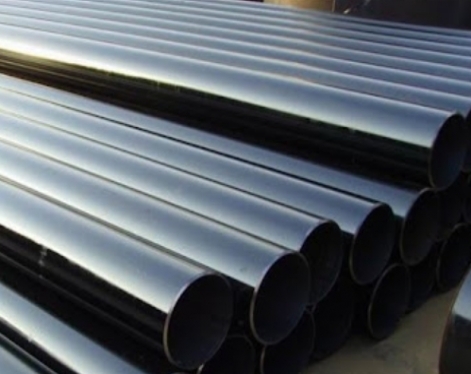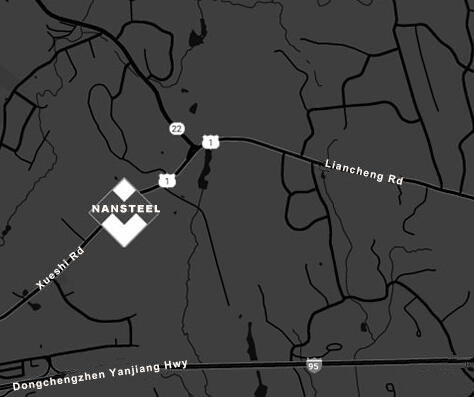As a special member of seamless steel pipes, high-pressure boiler tubes play a key role in many industrial fields. Its manufacturing method is the same as that of ordinary seamless steel pipes, but the requirements for the steel used in manufacturing are extremely strict. Most of them are high-quality carbon steel or alloy steel. These materials give high-pressure boiler tubes excellent performance.
Since high-pressure boiler tubes are often in a high-temperature and high-pressure environment, they are very susceptible to oxidation and corrosion under the dual effects of high-temperature flue gas and water vapor. Therefore, high-pressure boiler tubes need to have a series of special properties to ensure stable operation under harsh working conditions.
Working environment: high temperature and high pressure
The working environment of high-pressure boiler tubes is extremely harsh, and they are exposed to the dual test of high temperature and high pressure for a long time. Its operating temperature can often reach hundreds of degrees, and the pressure is far beyond the tolerance of ordinary pipes. In such an environment, the pipes will frequently come into contact with high-temperature flue gas and water vapor, causing oxidation and corrosion. For example, in the boiler of a thermal power station, high-pressure boiler tubes need to withstand the erosion of high-temperature steam for a long time, which poses a great challenge to the stability and durability of their materials. If the high-pressure boiler tubes cannot withstand such a harsh working environment, it will not only affect the normal operation of the equipment and reduce production efficiency, but may also cause safety accidents and cause immeasurable losses.

Essential qualities of high pressure boiler tubes
1. High lasting strength: guarantee for continuous work.
High endurance strength is one of the key properties of high pressure boiler tubes. In a high temperature and high pressure environment, the pipe will be subjected to continuous stress. If the lasting strength is insufficient, the pipe will easily creep, deform or even rupture. High lasting strength can ensure that high-pressure boiler tubes maintain stable shape and performance during long-term operation, ensuring the continuity of industrial production.
2. Anti-oxidation and corrosion: a shield against harsh environments.
In the working environment of high-pressure boiler tubes, high-temperature flue gas and water vapor will cause oxidation and corrosion to them, which will gradually weaken the performance of the tubes and shorten their service life. The high resistance to oxidation and corrosion of high-pressure boiler tubes is like a solid shield covering them, effectively preventing oxidation and corrosion erosion, allowing them to maintain good performance in harsh environments.
3. Good tissue stability: the "stabilizing force" of the internal structure
Good organizational stability is crucial for high-pressure boiler tubes. Under high temperature and high pressure conditions, the internal organization of the tube is prone to change, resulting in performance degradation. The good organizational stability of high-pressure boiler tubes can ensure the stability of their internal structure, so that they can always maintain performance consistency during long-term working processes. This is like a "stabilizing force", ensuring that high-pressure boiler tubes can operate reliably under various complex conditions.
Uses revealed: The "unsung heroes" in the industrial field
1. High-pressure boiler tubes are key materials for manufacturing high-pressure and ultra-high-pressure boilers, and are widely used in the manufacture of core components such as superheater tubes, reheater tubes, gas guide tubes and main steam pipes. Among these components, high-pressure boiler tubes need to withstand high temperature, high pressure and high-speed steam erosion.
2. In the petrochemical industry, high-pressure boiler tubes also play an important role. They are used to transport various high-temperature and high-pressure fluids, such as oil, natural gas and various chemical raw materials. High-pressure boiler tubes are indispensable in equipment such as the distillation unit, cracking unit in the refinery and the reactor in the chemical plant.
Various types: meet different industrial needs
There are many types of high-pressure boiler tubes, and common materials include 20G, 12Cr1MoVG, 15CrMoG, etc. 20G is a high-quality carbon structural steel with good comprehensive mechanical properties and process performance and relatively low cost. 12Cr1MoVG is an alloy structural steel containing alloy elements such as chromium, molybdenum, and vanadium. It has higher oxidation resistance and thermal strength. Its creep limit is very close to the endurance strength value. It has high plasticity under long-term tension. It is often used in high-pressure, ultra-high-pressure, and subcritical power station boiler superheaters, headers, and main steam ducts, etc. It can operate stably in a high temperature environment of 580°C. 15CrMoG is also an alloy steel pipe with good oxidation resistance and thermal strength. It is suitable for superheaters, reheaters and steam pipes of medium-temperature and high-pressure boilers.
Read more: Characteristics of Heat Treatment Process for High Pressure Boiler Tubes
Since high-pressure boiler tubes are often in a high-temperature and high-pressure environment, they are very susceptible to oxidation and corrosion under the dual effects of high-temperature flue gas and water vapor. Therefore, high-pressure boiler tubes need to have a series of special properties to ensure stable operation under harsh working conditions.
Working environment: high temperature and high pressure
The working environment of high-pressure boiler tubes is extremely harsh, and they are exposed to the dual test of high temperature and high pressure for a long time. Its operating temperature can often reach hundreds of degrees, and the pressure is far beyond the tolerance of ordinary pipes. In such an environment, the pipes will frequently come into contact with high-temperature flue gas and water vapor, causing oxidation and corrosion. For example, in the boiler of a thermal power station, high-pressure boiler tubes need to withstand the erosion of high-temperature steam for a long time, which poses a great challenge to the stability and durability of their materials. If the high-pressure boiler tubes cannot withstand such a harsh working environment, it will not only affect the normal operation of the equipment and reduce production efficiency, but may also cause safety accidents and cause immeasurable losses.

Essential qualities of high pressure boiler tubes
1. High lasting strength: guarantee for continuous work.
High endurance strength is one of the key properties of high pressure boiler tubes. In a high temperature and high pressure environment, the pipe will be subjected to continuous stress. If the lasting strength is insufficient, the pipe will easily creep, deform or even rupture. High lasting strength can ensure that high-pressure boiler tubes maintain stable shape and performance during long-term operation, ensuring the continuity of industrial production.
2. Anti-oxidation and corrosion: a shield against harsh environments.
In the working environment of high-pressure boiler tubes, high-temperature flue gas and water vapor will cause oxidation and corrosion to them, which will gradually weaken the performance of the tubes and shorten their service life. The high resistance to oxidation and corrosion of high-pressure boiler tubes is like a solid shield covering them, effectively preventing oxidation and corrosion erosion, allowing them to maintain good performance in harsh environments.
3. Good tissue stability: the "stabilizing force" of the internal structure
Good organizational stability is crucial for high-pressure boiler tubes. Under high temperature and high pressure conditions, the internal organization of the tube is prone to change, resulting in performance degradation. The good organizational stability of high-pressure boiler tubes can ensure the stability of their internal structure, so that they can always maintain performance consistency during long-term working processes. This is like a "stabilizing force", ensuring that high-pressure boiler tubes can operate reliably under various complex conditions.
Uses revealed: The "unsung heroes" in the industrial field
1. High-pressure boiler tubes are key materials for manufacturing high-pressure and ultra-high-pressure boilers, and are widely used in the manufacture of core components such as superheater tubes, reheater tubes, gas guide tubes and main steam pipes. Among these components, high-pressure boiler tubes need to withstand high temperature, high pressure and high-speed steam erosion.
2. In the petrochemical industry, high-pressure boiler tubes also play an important role. They are used to transport various high-temperature and high-pressure fluids, such as oil, natural gas and various chemical raw materials. High-pressure boiler tubes are indispensable in equipment such as the distillation unit, cracking unit in the refinery and the reactor in the chemical plant.
Various types: meet different industrial needs
There are many types of high-pressure boiler tubes, and common materials include 20G, 12Cr1MoVG, 15CrMoG, etc. 20G is a high-quality carbon structural steel with good comprehensive mechanical properties and process performance and relatively low cost. 12Cr1MoVG is an alloy structural steel containing alloy elements such as chromium, molybdenum, and vanadium. It has higher oxidation resistance and thermal strength. Its creep limit is very close to the endurance strength value. It has high plasticity under long-term tension. It is often used in high-pressure, ultra-high-pressure, and subcritical power station boiler superheaters, headers, and main steam ducts, etc. It can operate stably in a high temperature environment of 580°C. 15CrMoG is also an alloy steel pipe with good oxidation resistance and thermal strength. It is suitable for superheaters, reheaters and steam pipes of medium-temperature and high-pressure boilers.
Read more: Characteristics of Heat Treatment Process for High Pressure Boiler Tubes









